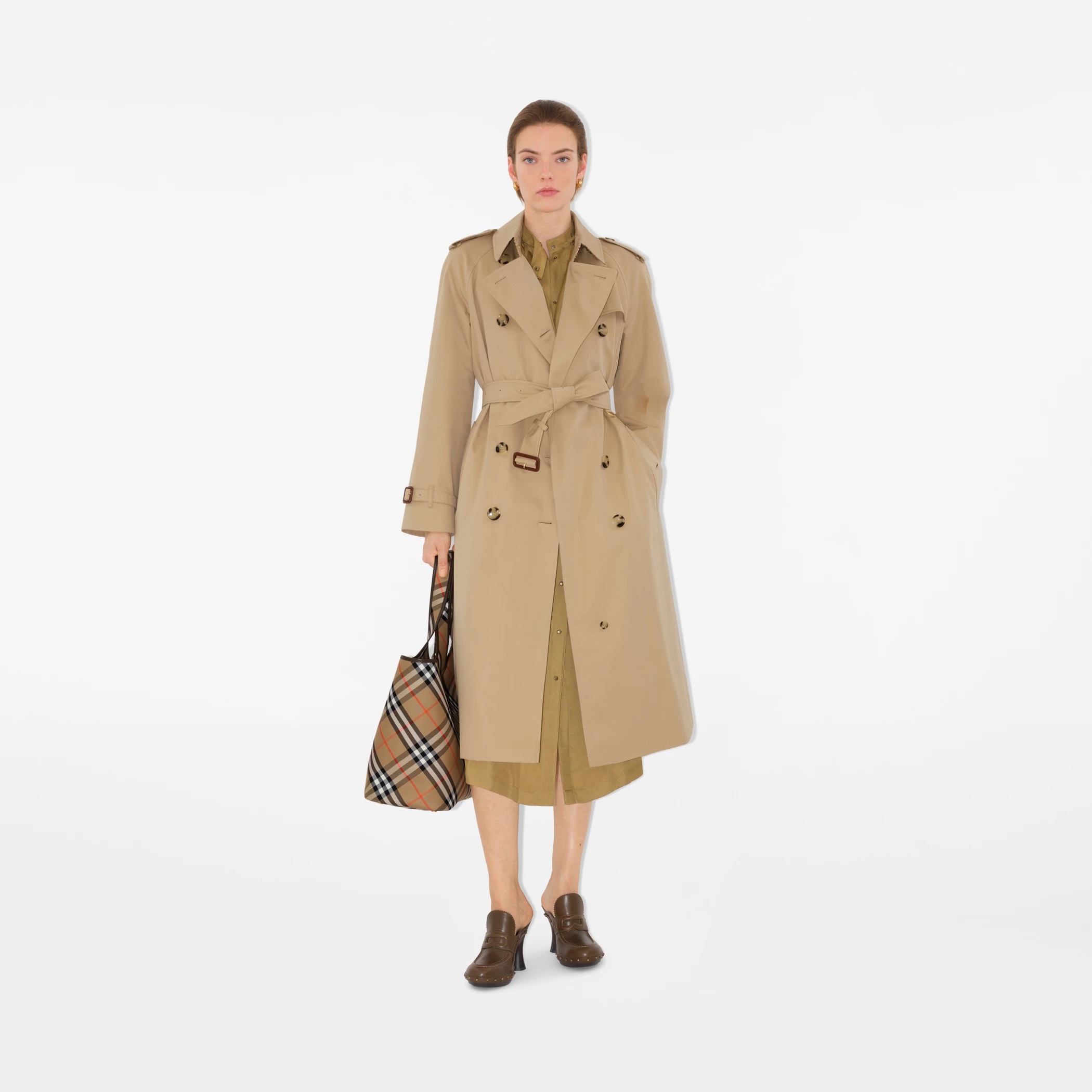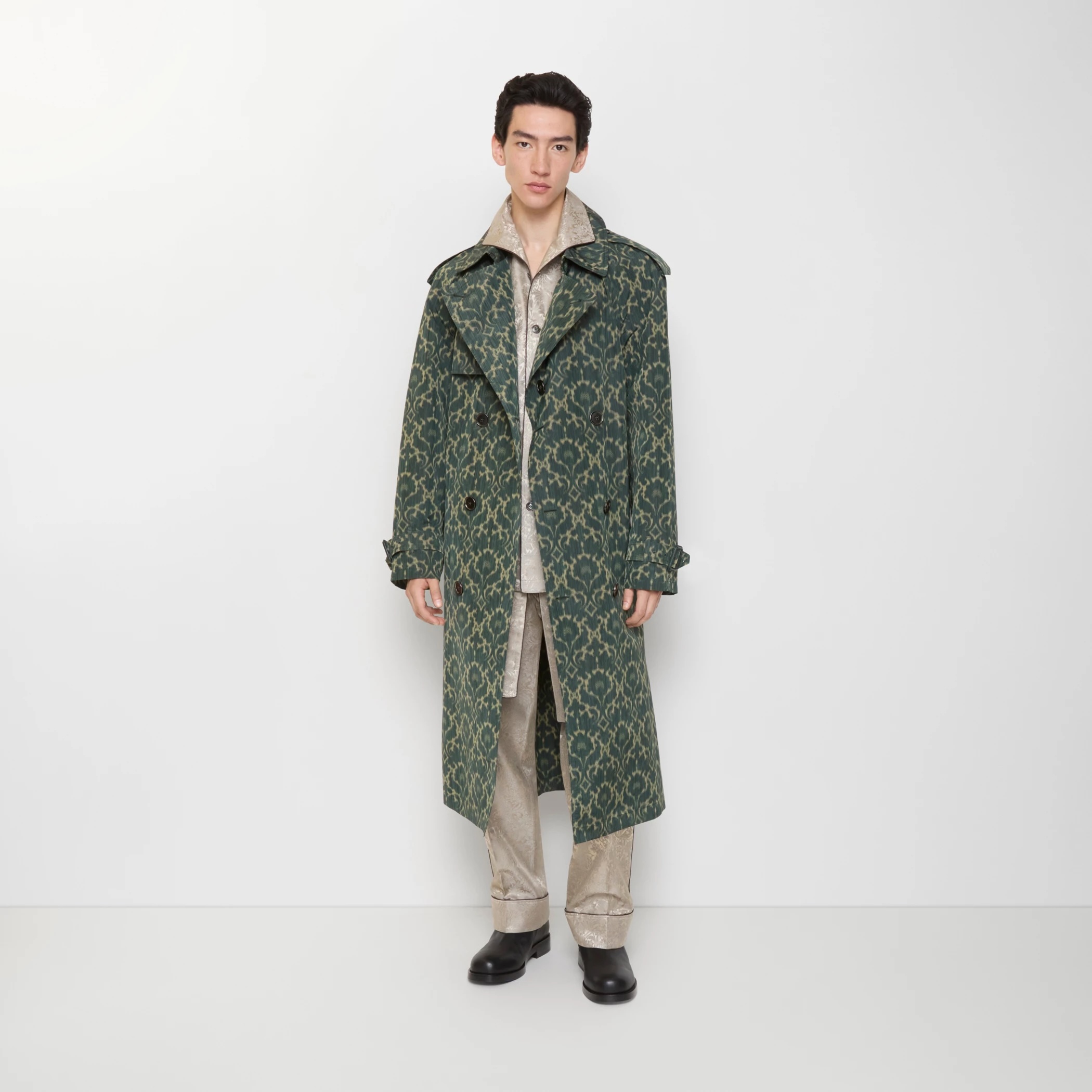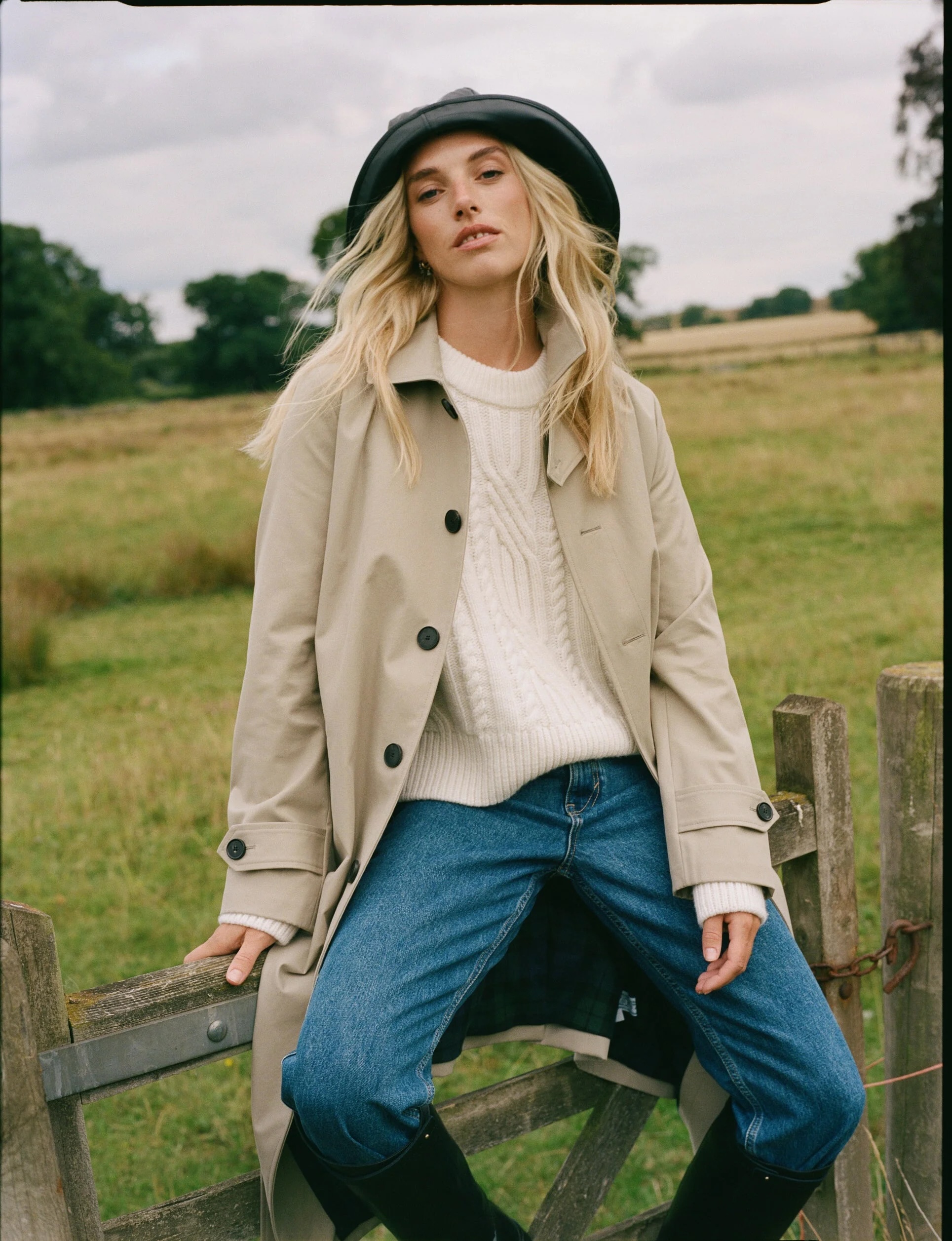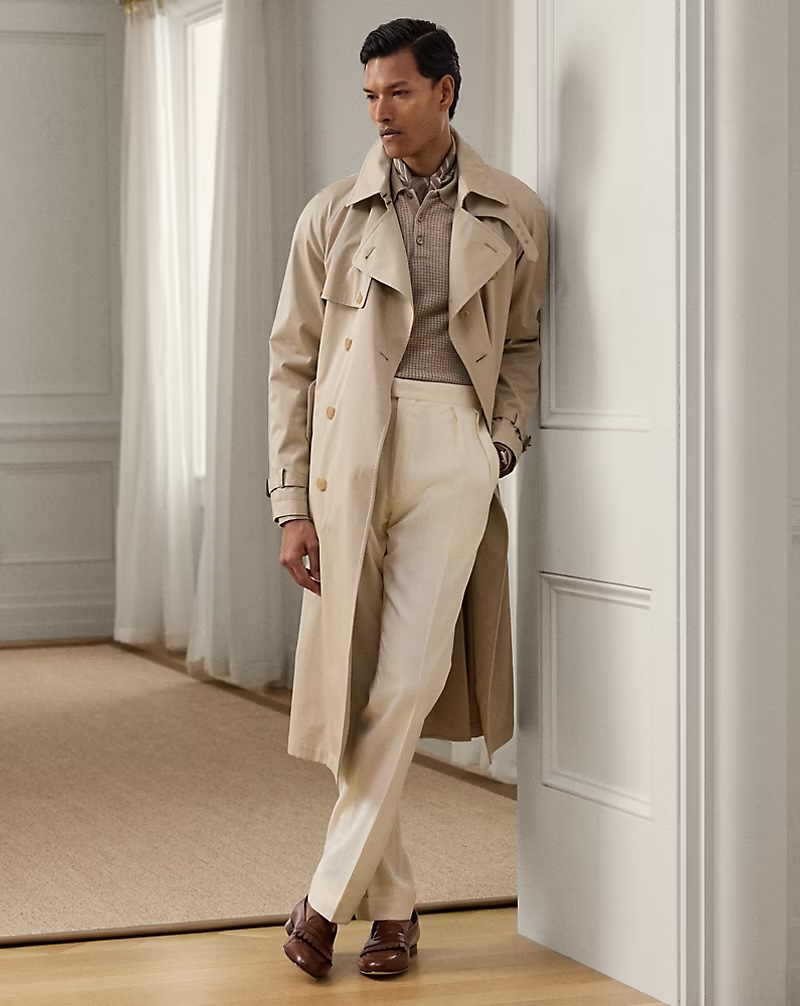The trench coat is a British fashion icon that’s been worn by everyone from brave World War soldiers to Sex and the City’s Samantha Jones
The trench coat did not originate in the trenches, says Amie Elizabeth White, but it was greatly influenced by the World Wars, and was sported by a host of film and TV stars.
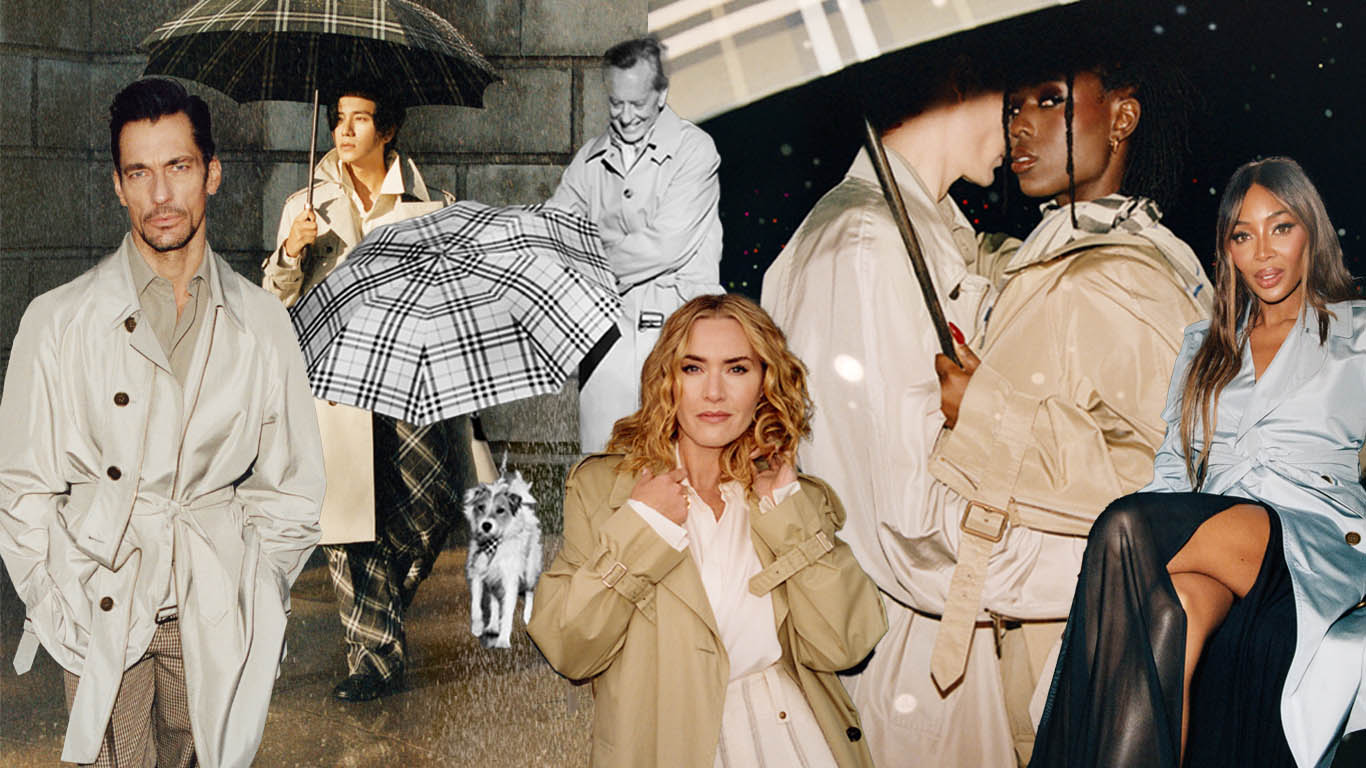

When you purchase through links on our site, we may earn an affiliate commission. Here’s how it works.
As Joan Collins once said, ‘there is nothing more elegant in winter than dark tights worn with matching knee-length boots and a belted trench coat.’
You might be relieved to hear that trench coats did not in fact originate — as we are often told — in the horrid First World War trenches, but as a coat for sporting and working gentlemen.
The story begins in the 1820s when Charles Mackintosh invented a rubberised, waterproof fabric and fashioned it into a coat. The ‘Mack’, as it became known, was revolutionary and rather revolting — the non-breathable fabric meant moisture vapor from sweat could not escape.
In 1853, Mayfair-based tailor John Emery patented the world’s first waterproof wool fabric. He designed protective sportswear for men, and used it to make raincoats, selling them under his company, Aquascutum (from the Latin for ‘water’ and ‘shield’). They were lighter and more breathable than the Mack, and just three years later, were being supplied to British Army officers in the Crimean War.
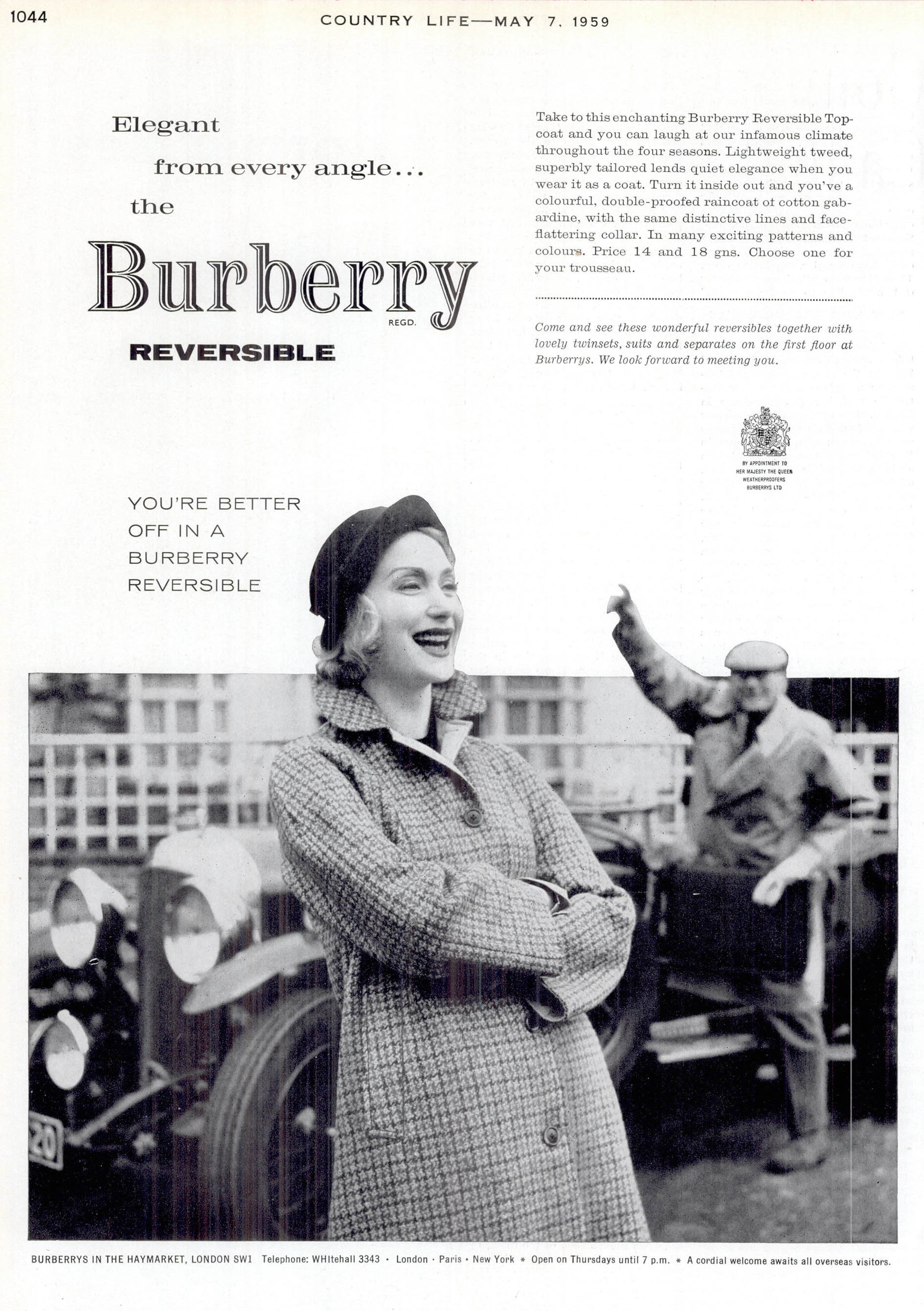
Burberry advertised its reversible coat in a 1959 edition of Country Life, featuring a lightweight tweed on one size and a cotton gabardine on the other.
The second knight in water-repellent armour was Hampshire-based Thomas Burberry, who established his company in 1865 aged just 21, catering to farmers and country sport aficionados. In 1879, he invented a two-layer, breathable gabardine fabric — a twill of linen over waterproofed cloth tweed — which he patented nearly a decade later. Emery and Burberry’s inventions coincided with the advent of the motor car industry — and their full-length, waterproof garments proved perfect for open-top driving.
In the early 20th century, Burberry added womenswear to its repertoire, featuring trench coats cut in a more feminine style. The company’s advertisements included bold illustrations of the then ultimate modern woman wearing a trench coat and carrying golf clubs over windswept landscapes — a scene traditionally associated with men.
Exquisite houses, the beauty of Nature, and how to get the most from your life, straight to your inbox.
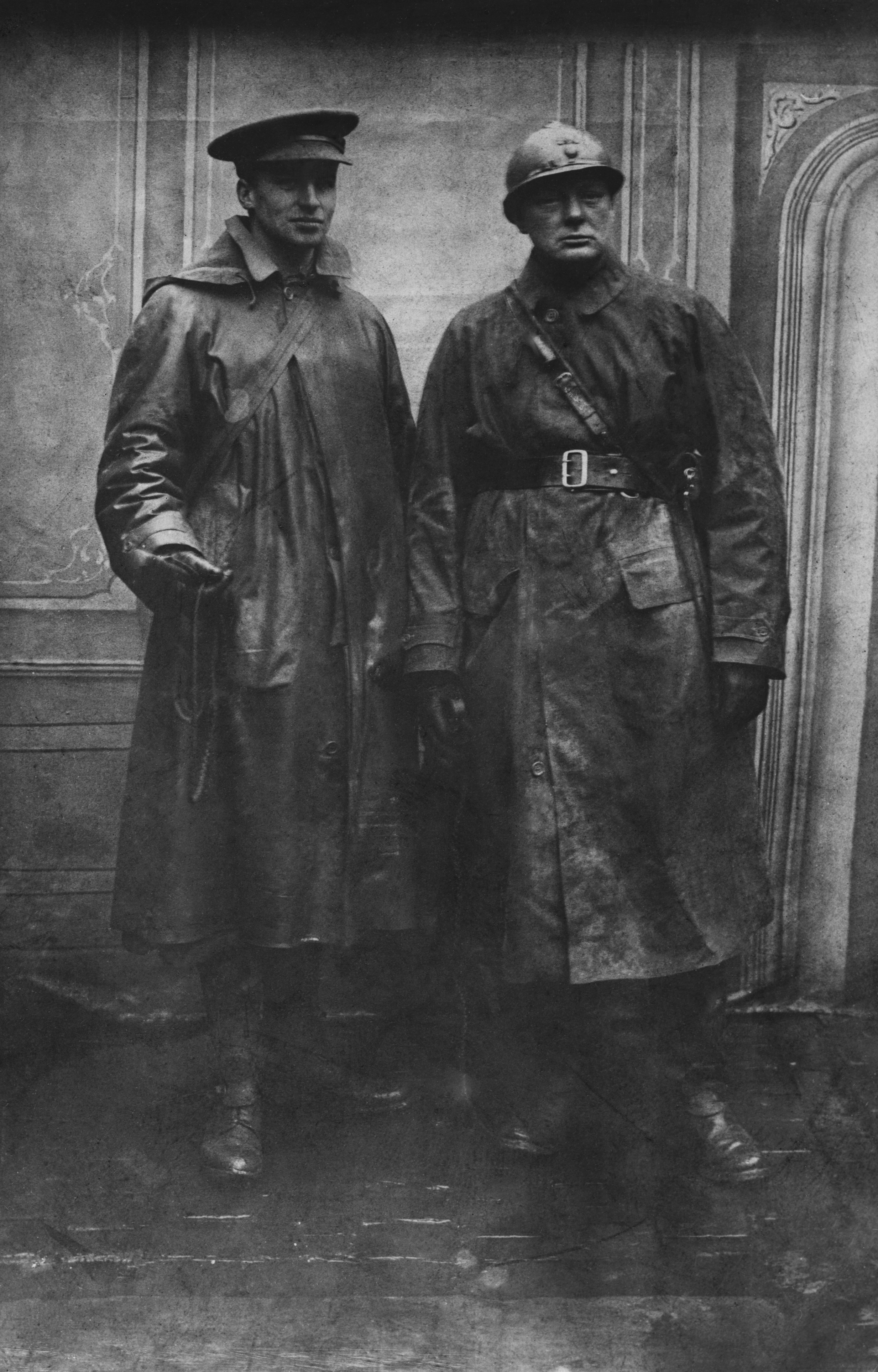
Winston Churchill, the then Lieutenant colonel of the 6th Royal Scot Fusiliers, and Archibald Sinclair, 1st Viscount Thurso, in the First World War.
Though the trench coat is often associated with soldiers, it was never standard military issue, meaning that those who wore it were high-ranking officers who had the means and privilege to procure their own clothes from their own tailors and outfitters. However, the World Wars did help to refine the trench coat into the design we recognise today with military-inspired details such as epaulettes, gun flaps, D-rings and storm shields all added on. When War propaganda depicted brave soldiers in their trench coats, civilians adopted the coat as an act of patriotism and solidarity. It just so happened to be wonderfully practical, too.
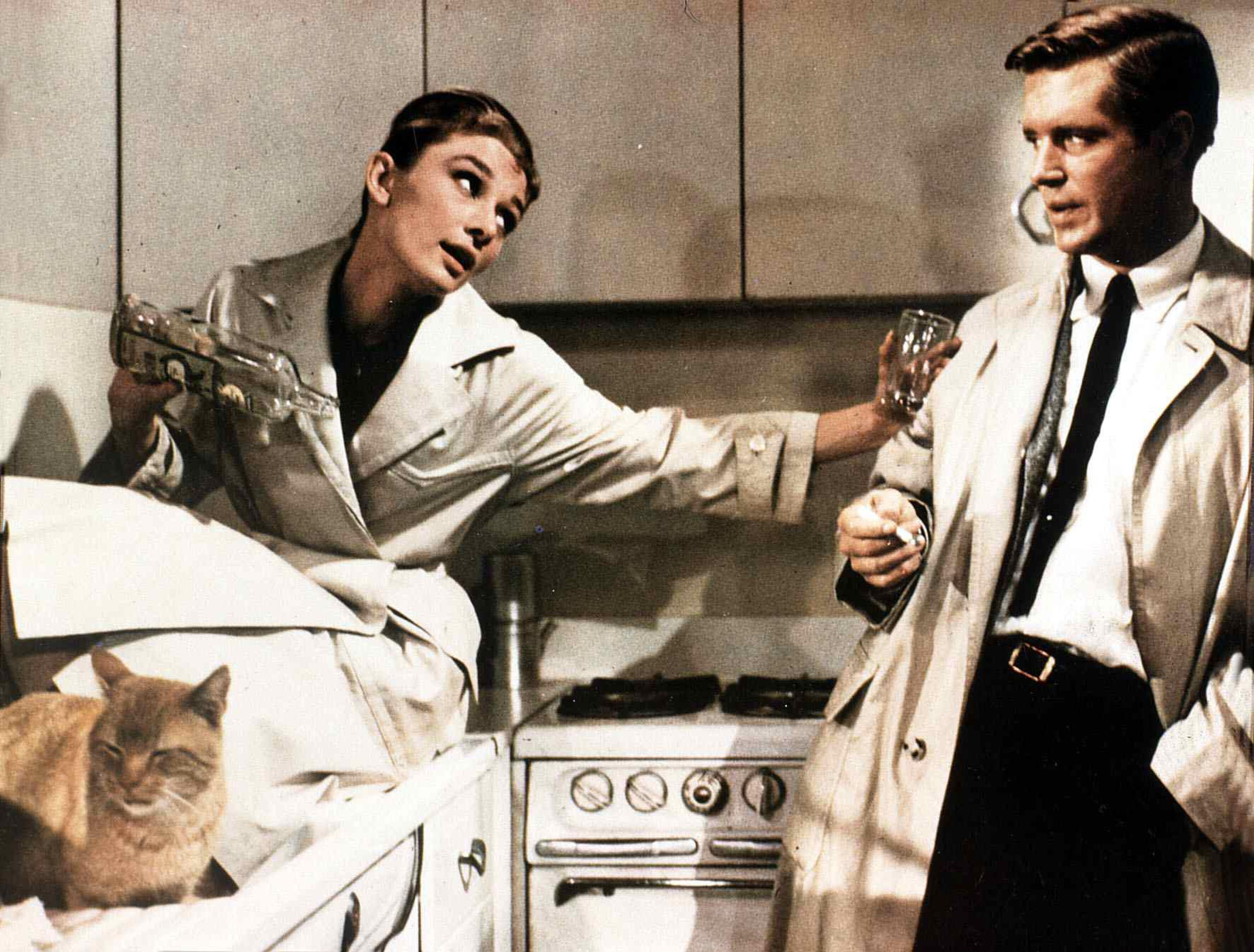
Audrey Hepburn and George Peppard as Holly and Paul Varjak in his and hers trench coats.
Since the Wars, the trench coat's appeal has been greatly bolstered by characters wearing it on the silver screen (Humphrey Bogart’s Rick Blaine in Casablanca, Audrey Hepburn’s Holly Golightly in Breakfast at Tiffany’s, James Bond(s), Kim Catrall’s Samantha Jones in Sex and the City), but it is its versatility that’s really kept it in the spotlight.
Few garments are as practical as they are stylish. It’s a much-needed tool against the British elements, but its belted waist is universally flattering and the classic taupe shade goes with everything else in your wardrobe. You can wear it to work or on a walk, and everywhere in between. And you can pop the collar when you require an air of mystery. There are excellent interpretations, but Burberry still does it best, so if you only buy one, you know where to go.
Amie Elizabeth White is Country Life's Acting Luxury Editor. She studied history at the University of Edinburgh and previously worked in fashion styling. She regularly writes for Country Life's London Life supplement and has written for Luxury London, covering everything from Chanel suits and skincare, to the best pies in the city. She has a big heart, but would sell her soul for a good pair of shoes.
